AiPrise
14 mins read
July 31, 2025
What Is the Difference Between Smurfing and Structuring in Money Laundering?

Key Takeaways










Money laundering is a financial crime involving the process of making illegally obtained funds appear legitimate. Criminal organizations, individuals, and entities employ various techniques to hide the illicit origin of money. Recognizing these techniques is essential for businesses, particularly those in the financial and fintech sectors, to comply with regulations and prevent fraud.
Two common methods used in money laundering are smurfing and structuring. While both aim to circumvent financial institution regulations, they differ significantly in how they are executed.
In this blog, we will compare smurfing vs structuring, shedding light on the key characteristics of each method and how they are used in money laundering activities.
Key Takeaways
- Smurfing involves multiple individuals making small deposits to obscure illicit funds, while structuring focuses on spreading out deposits over time to avoid regulatory reporting thresholds.
- Financial institutions must use tools like transaction monitoring and KYC to identify patterns of smurfing and structuring, ensuring compliance with anti-money laundering regulations.
- Both techniques are illegal and can lead to severe criminal penalties. Financial institutions failing to detect them may also face significant fines and reputational damage.
- AiPrise offers AI-powered monitoring and integrated KYC/AML tools to help businesses detect and prevent money laundering, ensuring compliance and reducing risks.
Understanding Smurfing in Money Laundering
Smurfing is a money laundering technique where a large sum of illicit funds is broken down into smaller, less suspicious amounts. The primary goal is to avoid triggering the regulatory reporting thresholds that financial institutions use to detect large-scale money laundering activities.
How Smurfing Works in Practice
A criminal or money launderer will typically deposit smaller sums of money into various accounts or make several transactions, often below the reporting threshold (e.g., $10,000 in many jurisdictions).
This process frequently involves multiple individuals, known as "smurfs," who each make a small deposit, further concealing the true origin of the funds.
Funds may also be frequently moved across different locations, accounts, or financial institutions to further obscure their source.
Common Methods Used in Smurfing
Smurfers employ various channels to move their illicit funds, exploiting common financial services to blend illegal money with legitimate transactions. The following are the most common methods:
- Bank Transfers: Breaking down large sums into multiple smaller payments sent to various bank accounts to avoid scrutiny.
- Wire Transfers: Utilizing international wire services to move smaller sums across borders, often to different recipients or financial institutions.
- Casino Transactions: In some cases, money launderers deposit small amounts into casinos, exchange them for chips, and later redeem the chips for cash.
Real-Life Example: The $11 Million Elder Fraud Scheme Led by Cynthia Song
In a significant case, Cynthia Song, a 43-year-old woman from Arcadia, California, pleaded guilty to leading a money laundering ring that defrauded over 180 elderly victims across the United States, amassing more than $11 million.
Song and her co-conspirators employed fraudulent tactics, often impersonating government officials or law enforcement, to create a sense of urgency among victims. Victims were coerced into sending funds to bank accounts controlled by the conspirators, primarily in the Los Angeles area. Once received, the money was swiftly transferred overseas, mainly to China.
To conceal the illicit nature of the transactions, Song recruited at least 15 individuals, predominantly of Chinese descent, to establish business entities and open multiple business bank accounts. These measures were designed to disguise the money laundering activities. The conspirators skimmed between 5% to 10% of the funds for themselves before transferring the remainder abroad.
Song faces up to 20 years in prison for her role in the scheme and is scheduled for sentencing on September 16, 2025. This case serves as a powerful reminder of the serious legal consequences tied to money laundering crimes.
What is Structuring in Money Laundering?
Structuring is one of the most common techniques used by criminals to avoid detection by financial institutions and authorities. While it shares similarities with smurfing, structuring focuses specifically on arranging financial transactions in a way that avoids triggering regulatory reports, such as the Currency Transaction Report (CTR).
How Structuring Works in Practice
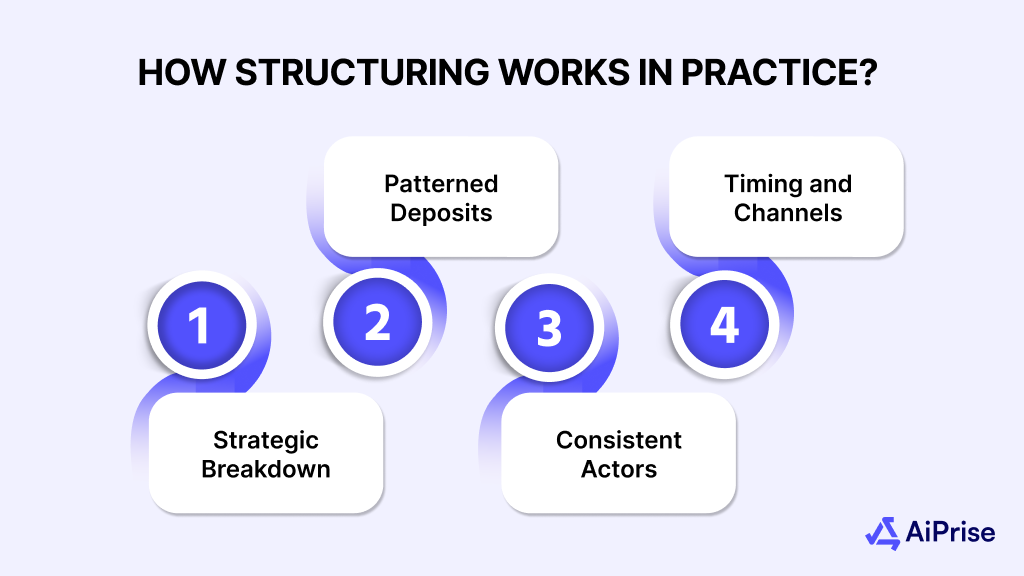
Criminals meticulously plan structured transactions to avoid detection, focusing on the following key tactics:
- Strategic Breakdown: A large amount of illicit money is broken down into smaller sums, each designed to fall below the regulatory reporting threshold (e.g., $10,000 for a CTR).
- Patterned Deposits: Funds are strategically spread out over time or deposited at regular intervals, creating a seemingly routine and legitimate financial pattern.
- Consistent Actors: Unlike smurfing, which relies on numerous individuals, structuring often revolves around the same individual or a small, consistent group of conspirators to execute these transactions.
- Timing and Channels: While multiple accounts might be utilized, the core focus remains on the precise timing and sequence of these smaller deposits to evade suspicion, rather than simply involving many different people.
Real-Life Example: The $25 Million Structuring Scheme in "Operation Polar Cap"
U.S. authorities uncovered a sophisticated money laundering operation that employed structuring to disguise over $25 million in illicit drug proceeds. Criminals engaged in this scheme systematically broke up large amounts of cash into multiple smaller deposits, each intentionally kept below the $10,000 threshold that requires financial institutions to file a Currency Transaction Report (CTR).
The operation utilized numerous bank accounts and involved frequent, small cash deposits made at various bank branches, thereby evading detection by automated anti-money laundering systems. This deliberate fragmentation of transactions was designed to circumvent regulatory scrutiny and obscure the true origin of the funds.
The FBI and U.S. Department of Justice (DOJ) initiated the investigation after detecting consistent patterns of suspicious deposits strategically kept under the reporting limit. Enhanced monitoring and analysis of transaction data enabled authorities to trace the flow of illicit funds, ultimately leading to the seizure of more than $25 million and the prosecution of individuals implicated in the scheme.
Smurfing vs Structuring: Key Differences
While both smurfing and structuring are techniques used in money laundering to evade detection, they are distinct in their methods and objectives. Understanding these differences is crucial for businesses, particularly those in financial institutions, to effectively combat such illegal activities.
Technique Focus
Smurfing involves breaking up large amounts of money into smaller, less suspicious sums and often requires multiple individuals (smurfs) to carry out the deposits or transactions.
Structuring, on the other hand, is a more deliberate process where the focus is on timing and frequency. A single individual or a small group structures transactions over time, keeping each deposit just below the threshold that requires regulatory reporting.
Scale and Scope
Smurfing typically involves a distributed network of multiple individuals, making it harder to trace the flow of funds back to a single orchestrator.
Structuring represents a more centralized and controlled effort, relying on the meticulous timing and patterning of transactions by one or a few individuals.
Detection and Monitoring
Smurfing is often easier to detect due to the sheer volume of distinct individuals making seemingly unrelated small transactions that collectively link to illicit funds.
Structuring can be more difficult to detect as the focus is on subtle patterns in timing and amounts over time by fewer individuals. However, advanced analytics can still flag these patterns.
Legal Consequences
Both smurfing and structuring are illegal and can result in significant criminal penalties. However, structuring may be seen as a more systematic approach, and those who are caught structuring may face harsher sentences, especially if they are found to be actively coordinating the activity over time.
Comparison Table: Smurfing vs Structuring

With a solid understanding of smurfing vs structuring, businesses can take proactive steps to identify potential money laundering activities and improve their anti-money laundering (AML) systems.
How Identifying Smurfing and Structuring Helps Prevent Money Laundering
Identifying smurfing and structuring is crucial for financial institutions and businesses to prevent money laundering. Understanding these tactics allows organizations to improve their detection systems, enhance compliance, and mitigate risk effectively.
AML Regulations Surrounding Smurfing and Structuring
Both smurfing and structuring are techniques used to circumvent anti-money laundering (AML) regulations by deliberately avoiding the regulatory reporting requirements. Financial institutions must be vigilant in identifying, monitoring, and reporting suspicious activities related to these practices, as outlined in global and local regulations.
Under Anti-Money Laundering (AML) regulations, businesses are required to file a Currency Transaction Report (CTR) for any single transaction exceeding $10,000. To avoid detection, criminals typically break up large sums into smaller transactions, ensuring each deposit stays below this threshold—this is the essence of structuring.
Regulatory bodies such as the Financial Action Task Force (FATF) and FinCEN in the U.S. guide institutions on how to handle these illicit activities. Financial institutions must have systems in place to monitor suspicious transaction patterns, conduct thorough Customer Due Diligence (CDD), and file Suspicious Activity Reports (SARs) when they detect smurfing or structuring.
Key Strategies for Detecting and Preventing Smurfing and Structuring
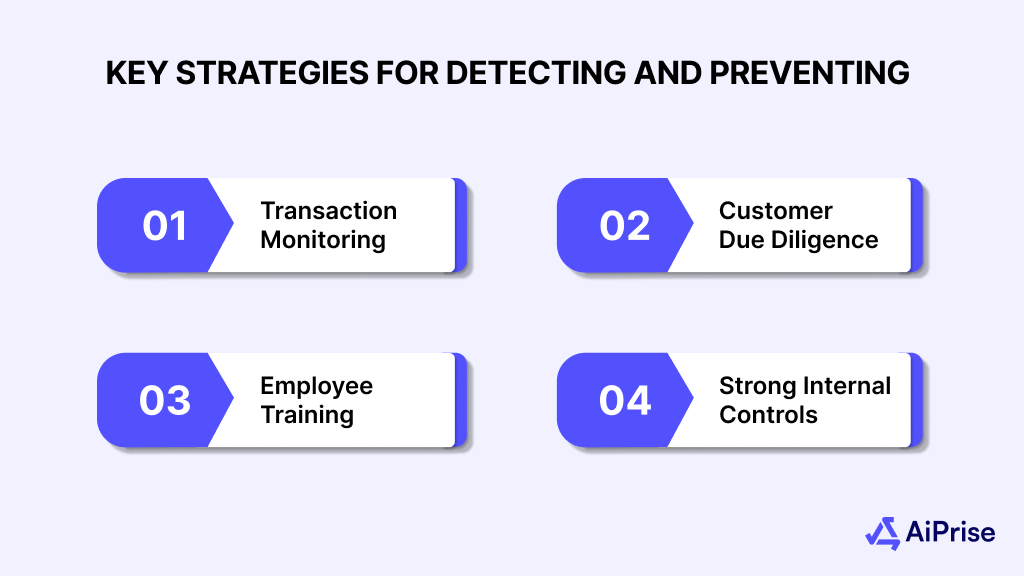
To effectively combat smurfing and structuring, financial institutions and businesses must implement a multi-layered approach that integrates advanced technology, robust internal controls, and vigilant human oversight. Here are key strategies for comprehensive protection:
- Advanced Transaction Monitoring Systems
Using AI-powered transaction monitoring systems is paramount. These systems go beyond simple threshold checks, utilizing advanced analytics to identify subtle, non-obvious patterns indicative of smurfing or structuring. This includes flagging frequent small deposits, unlinked transactions across multiple accounts, unusual timing, or amounts just below reporting thresholds. Real-time monitoring allows for rapid detection and intervention.
- Robust Customer Due Diligence (CDD) and Continuous Monitoring
Implementing robust Customer Due Diligence (CDD) during onboarding is critical to verifying identities and understanding customer behavior. This must be coupled with continuous AML monitoring of accounts and transactions throughout the customer lifecycle. Businesses must be prepared to conduct enhanced due diligence (EDD) for high-risk customers and promptly file Suspicious Activity Reports (SARs) with regulatory bodies whenever smurfing or structuring is detected.
- Comprehensive Employee Training and Awareness
Investing in regular and comprehensive training for compliance teams and frontline staff is essential. Employees should be thoroughly equipped to recognize the red flags of smurfing and structuring tactics, understand regulatory requirements, and know the correct procedures for timely reporting and investigation of suspicious activities.
- Strong Internal Controls and Regular Audits
Establishing and maintaining strong internal controls is fundamental. This includes conducting frequent system audits to ensure that AML controls are effectively identifying potential money laundering schemes, particularly those involving smurfing or structuring, and that all procedures are aligned with current regulatory guidelines.
Mitigating Regulatory and Reputational Risks
Proactive identification and mitigation of smurfing and structuring are not just about compliance; they are fundamental to safeguarding an institution's financial health and reputation.
Failing to detect and report these illicit activities can lead to severe regulatory fines and penalties, such as the $3 billion penalty TD Bank faced for AML lapses in October 2024. Furthermore, involvement, even inadvertent, in money laundering can cause significant reputation damage, leading to a loss of client trust and severe business setbacks.
By integrating these comprehensive detection and prevention methods and adhering to AML regulations, businesses can effectively mitigate the risks posed by money laundering tactics. However, having expert solutions, like AiPrise, can further enhance your ability to combat money laundering and ensure robust compliance.
How AiPrise Helps in Preventing Smurfing and Structuring
Understanding and detecting smurfing and structuring are essential for businesses to effectively prevent money laundering, but doing so requires advanced tools and technologies. This is where AiPrise can significantly enhance your organization's fraud prevention and compliance efforts.
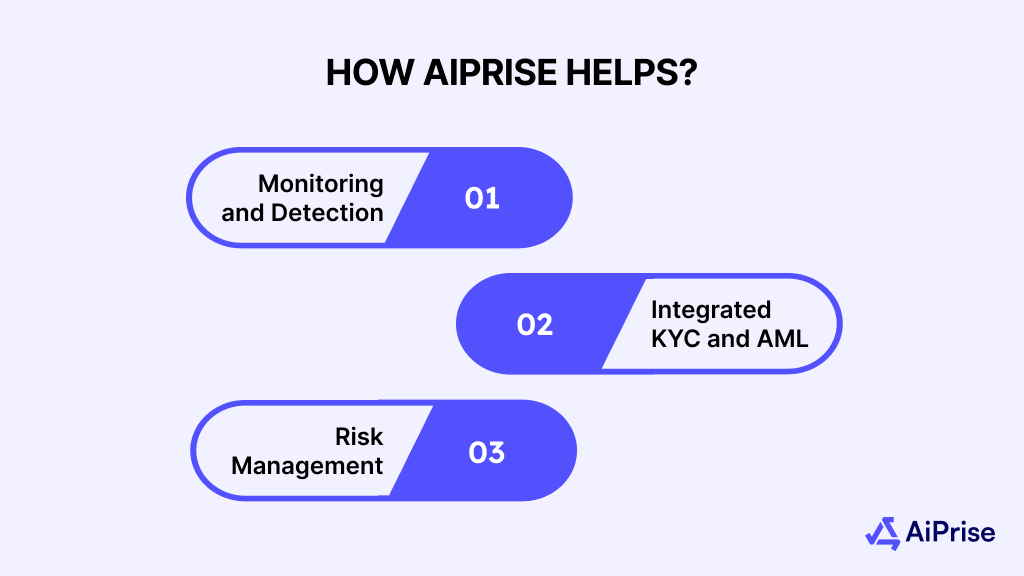
Real-Time Monitoring and Detection
AiPrise uses AI-powered systems to identify suspicious transaction patterns in real-time, flagging potential smurfing and structuring activities. Our platform detects small, frequent deposits and other behaviors associated with money laundering, ensuring risks are caught early.
Integrated KYC and AML Solutions
AiPrise’s KYC and AML tools streamline identity verification and transaction monitoring, offering:
- Real-time alerts for suspicious activities.
- Automated regulatory reporting to ensure compliance across 220+ countries.
Simplified Risk Management and Compliance
AiPrise helps businesses stay compliant with evolving global regulations and manage risk efficiently. Key features include:
- Cross-border transaction monitoring.
- Regular updates on compliance standards.
By using AiPrise, businesses can confidently detect and prevent smurfing and structuring, safeguarding themselves from money laundering risks.
Conclusion
Understanding the differences between smurfing and structuring is crucial for businesses, especially financial institutions, aiming to prevent money laundering. Both techniques are commonly used to evade detection, but by identifying their unique patterns, organizations can significantly enhance their fraud detection systems and stay compliant with regulatory requirements.
Through advanced tools like AI-powered monitoring, KYC, and AML solutions, businesses can effectively track and prevent money laundering activities. By utilizing these technologies, financial institutions can mitigate risks, ensure compliance across global jurisdictions, and avoid the penalties associated with illicit financial activities.
AiPrise provides advanced AI-powered monitoring, KYC, and AML solutions to help businesses track suspicious activities, prevent illicit transactions, and mitigate risks.
Book A Demo today to protect your business from money laundering risks.
FAQs
1. Is smurfing the same as structuring?
No. Smurfing typically involves breaking up large sums of money into smaller transactions made by multiple individuals (or "smurfs"). Structuring, on the other hand, involves a single individual or a small group making frequent, smaller deposits that are just below the legal reporting threshold, with the goal of evading financial scrutiny.
2. What is the purpose of smurfing and structuring?
The purpose of both smurfing and structuring is to avoid detection by financial institutions and regulatory bodies. These techniques are used to evade reporting requirements (like the Currency Transaction Report, or CTR) for transactions above a specific threshold, which typically triggers an investigation into potential illicit activities such as money laundering.
3. How do financial institutions detect smurfing and structuring?
Financial institutions can detect smurfing and structuring through advanced transaction monitoring systems. These systems flag suspicious patterns, such as multiple small deposits made within a short time frame or the same person making frequent deposits just below the reporting threshold.
4. What are the consequences of getting caught for smurfing or structuring?
The consequences of getting caught for smurfing or structuring can be severe. Individuals and businesses involved can face hefty fines, asset seizures, and even criminal charges. Financial institutions that fail to detect these activities can be penalized with substantial fines and reputational damage, as seen in cases like TD Bank's record $3 billion fine.
5. How can businesses prevent smurfing and structuring?
Businesses can prevent smurfing and structuring by implementing robust anti-money laundering (AML) systems, including real-time transaction monitoring, KYC (Know Your Customer) procedures, and regular staff training on detecting suspicious activities. These measures ensure that any attempts at structuring or smurfing are identified and reported promptly.
6. How does AiPrise help detect and prevent smurfing and structuring?
AiPrise offers comprehensive solutions for KYC and AML compliance, using AI-driven analytics to detect patterns indicative of smurfing and structuring. Our platform monitors transactions in real-time, flags suspicious activity, and generates automated reports, helping businesses comply with regulations and prevent illicit financial transactions.
You might want to read these...

Aiprise has helped streamline our KYB (Know Your Business) flow in 100+ countries. No other tool comes close.





Speed Up Your Compliance by 10x
Automate your compliance processes with AiPrise and focus on growing your business.









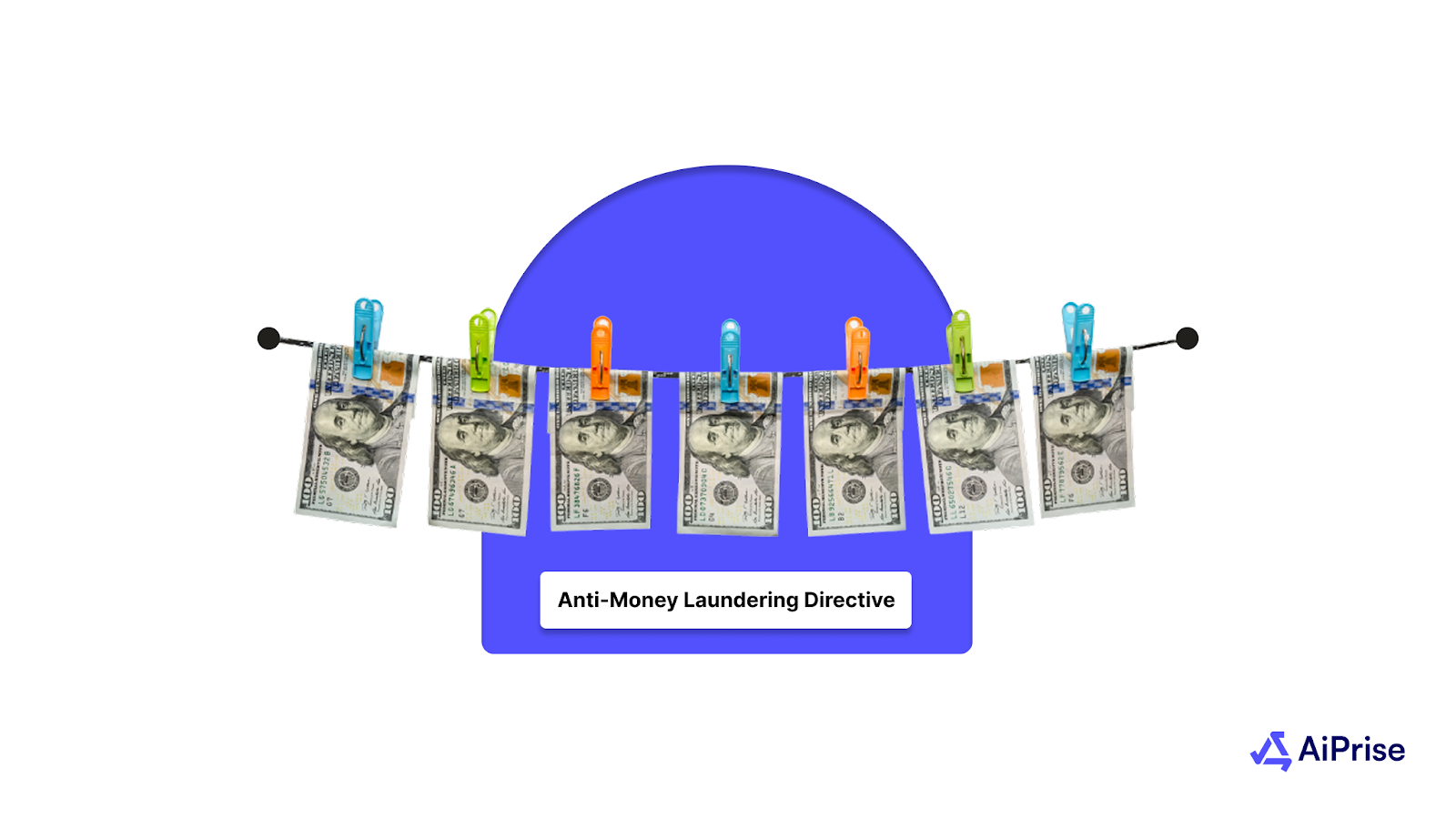
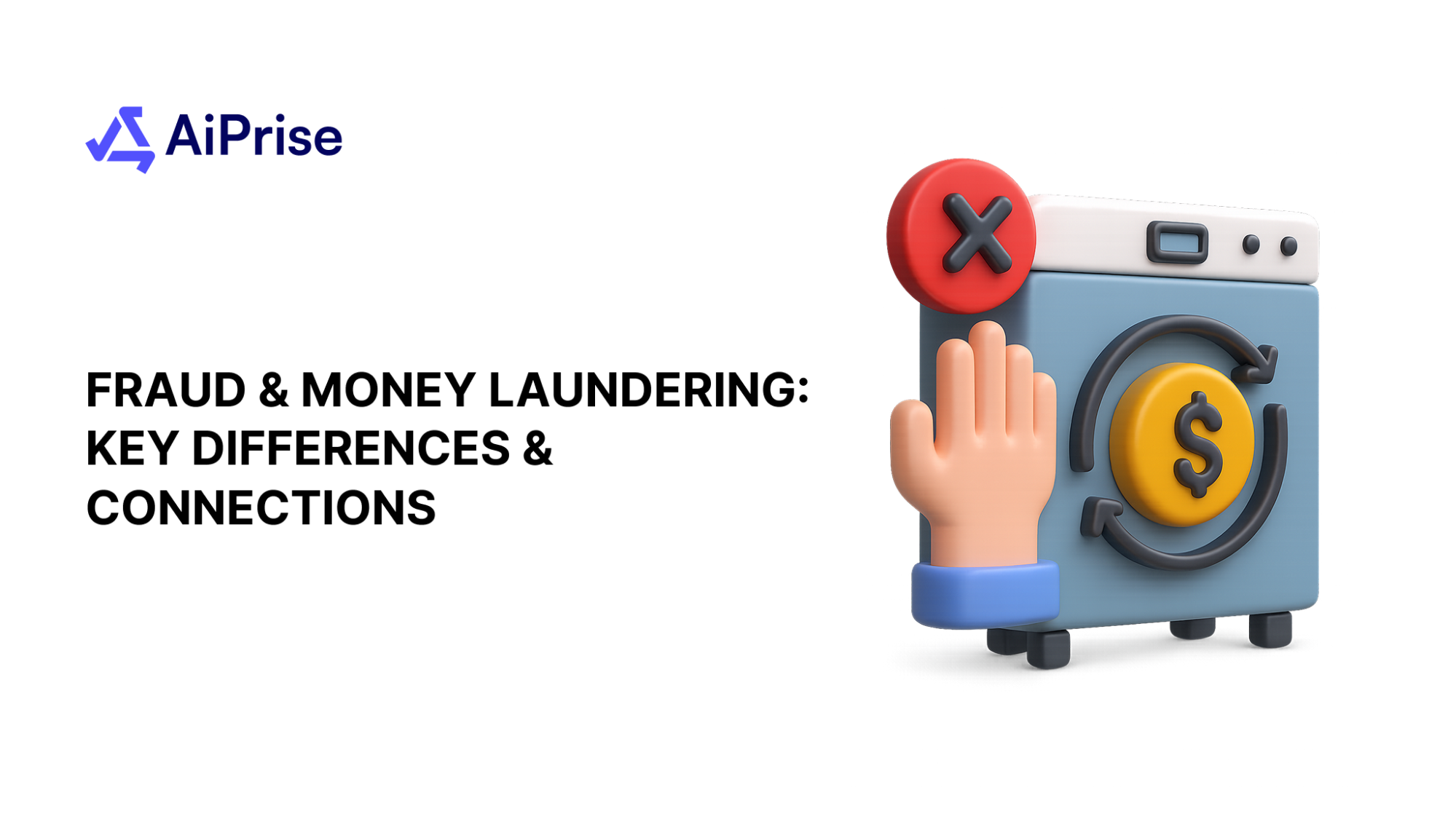

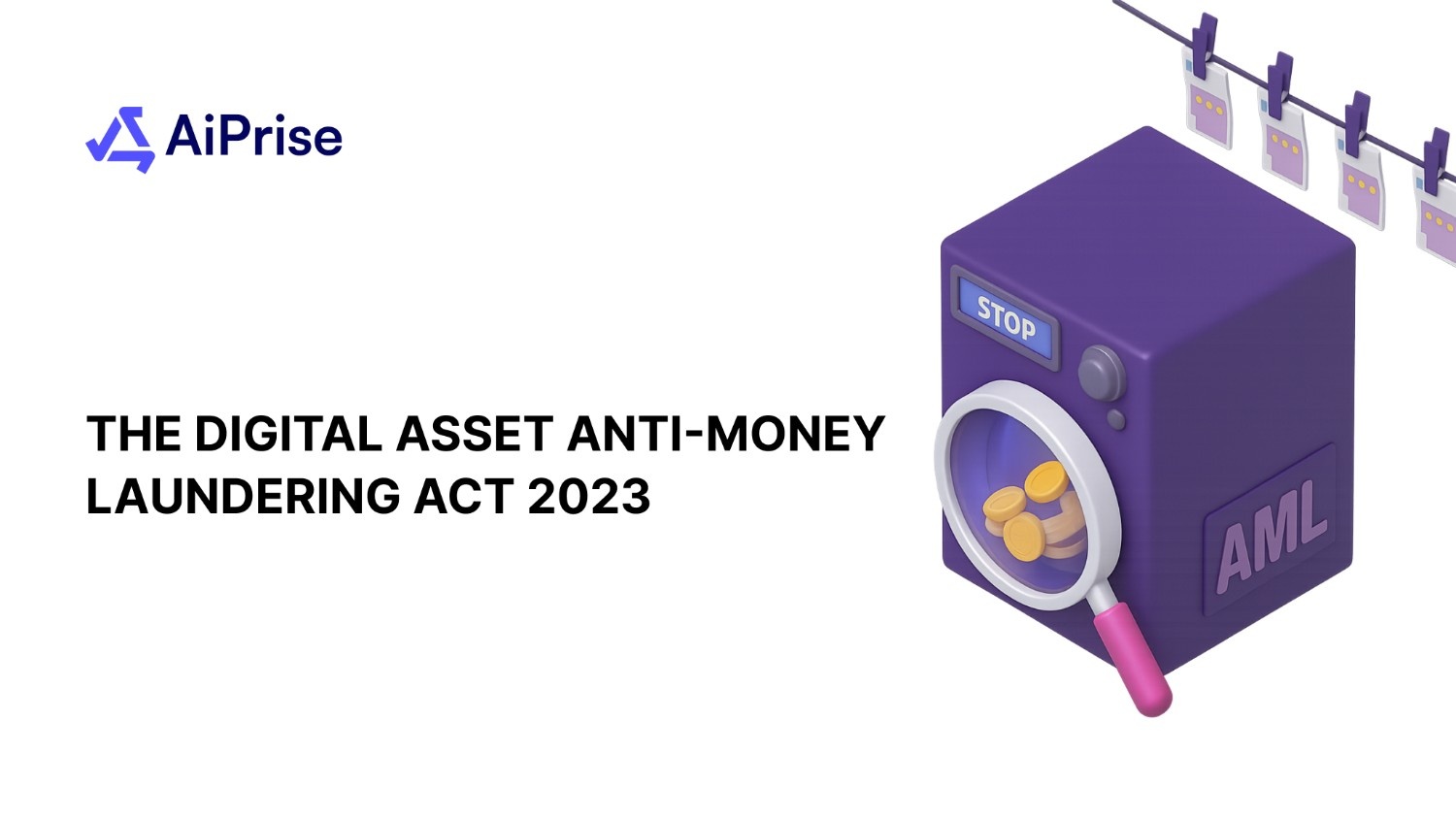
.png)


.png)







.png)















